By Commander Neil Westphalen, Royal Australian Navy Reserve
Purpose
More than a century after its establishment, many Royal Australian Navy (RAN) uniforms and ranks continue to reflect those used by the (British) Royal Navy (RN). The first of this three-part article described the history of Navy sailor uniforms since 1509,(1) while the second examined the development of Navy medical and dental sailor uniforms since 1879.(2) This final part explains the evolution of Navy medical and dental sailor rank and rate badges since 1827.
A subsequent article will do likewise for RAN health officers.
Sailor Rank Badges
The history of RN and RAN rank badges is summarised at Table 1; numbers in parentheses per the following paragraphs also refer.(3)
For centuries, Navy personnel were paid in accordance with their seamanship or other skills, experience and/or responsibilities. Although senior sailors were not generally identifiable by their attire, many could still be identified by their rattan canes or short pieces of rope, which were used to motivate or ‘start’ their subordinates. The use of ‘starters’ was officially abolished in 1809.(4)
The ranks of First and Second Class Petty Officer (PO) were formally established in 1827, with red distinguishing badges on their left upper arm (see (1)). In 1853, the Leading Seaman (LS) rank was added below the two PO ranks, and a Chief Petty Officer (CPO) rank was added above (see (2)). The existing rank badges became those for the two junior ranks, while the two senior ranks received new badges: the two crossed anchors used for First Class POs, and an anchor surrounded by oak leaves for CPOs.(5)
All sailors wore ‘square rig’ uniform until 1879, when CPOs were given a ‘fore-and-aft rig’, with double- breasted jacket, tie, and peaked cap with what is now the PO cap badge. The surrounding oak leaves on the CPO arm badge were also replaced by laurel at this time (see (3)).(6)
In 1890, the CPO arm badge was abolished, the black horn jacket buttons on their jackets were changed to gilt, and their rate badges were moved from the right upper arm to both jacket lapels (see (4)).(7) This became known as ‘Class I’ rig, which was worn by all ‘civil branch’ (non-seamen) CPO and PO equivalents.(8) ‘Class I’ rig was extended to all ‘military branch’ (seaman) POs with more than four years’ seniority in 1920,(9) then to those with more than one years’ seniority in 1923,(10) and to all POs irrespective of seniority after the early 1970s.(11)
1890 also saw ‘square rig’ for seaman branch personnel being referred to as ‘Class II’ uniform, while ‘Class III’ referred to a double-breasted ‘fore-and-aft rig’, with black horn rather than gilt buttons, for non- seaman junior sailors.(12) ‘Class III’ uniforms for male medical and dental junior sailors were abolished in the RAN in 1959.(13)
The coronation of King Edward VII in 1901 led to the St Edward’s crown on all Navy badges being replaced by the Tudor crown (see (5)). In 1907, the Second Class Petty Officer rank was abolished (see (6)).(14)
In 1919, CPOs received a new cap badge, based on their pre-1890 arm badge (see (7)), while POs received the old CPO cap badge, which has been worn to this day.(15) In 1925, CPOs were also given three ornamental cuff buttons, as a nod to their original function of securing ‘turn-back’ sleeve cuffs on a range of Navy uniforms during the previous century (see (8)).(16)
The coronation of Queen Elizabeth II in 1953 resulted in all Navy badges reverting to an updated St Edward’s crown (see (9)).(17)
RAN uniforms followed RN practice until 1966, when ‘Australia’ flashes were added to both shoulders (see (10)).(18) The rank of Warrant Officer was added above that of CPO in 1971 (see (11)),(19) while the rank of Able Seaman received its own dedicated insignia, to differentiate them from the Seaman rank, in 1991 (see (12)).(20) The first Warrant Officer of the Navy was appointed in 1993 (see (13)).(21)
All ‘square rig’ and ‘fore-and-aft’ working rigs had red rank and rate badges until 1990.(22) RAN winter uniforms have since had only gold badges, while summer uniforms or ‘whites’ continue to have dark blue. The current soft rank insignia (SRI) slides for these uniforms have used embroidered ‘old gold’ coloured thread since 1991.(23) Matching camouflaged SRIs were used with the grey Proban® overalls, and are still used by Navy personnel who wear the Australian Multicam Camouflage Uniform (AMCU) worn by Army members since 2014.(24)
Good Conduct Badges.
Chevrons on the left arm below the rank badge were introduced to recognise good conduct (or undiscovered crime) in 1849. From 1860, up to three stripes were awarded after three, eight and 13 years’ service (four, eight and 12 years from 1950).(25) While each stripe initially earned an additional one penny per stripe per day, the RAN de-linked these pay increments from the badges, and renamed them Long Service Badges in 1971.(26)

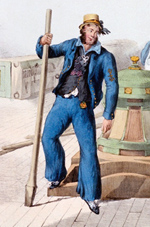
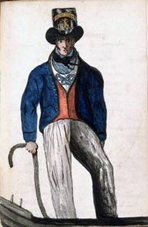
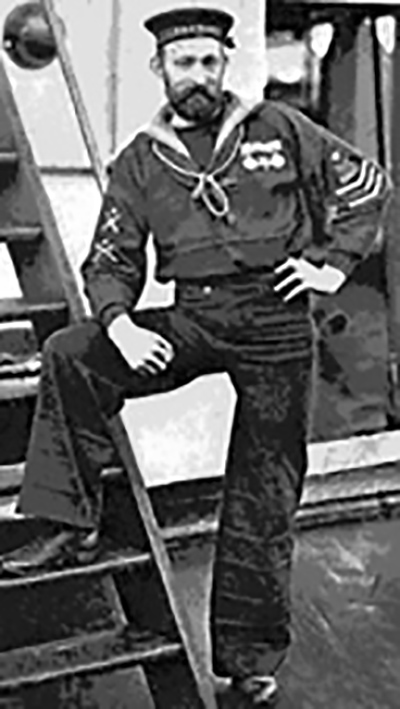
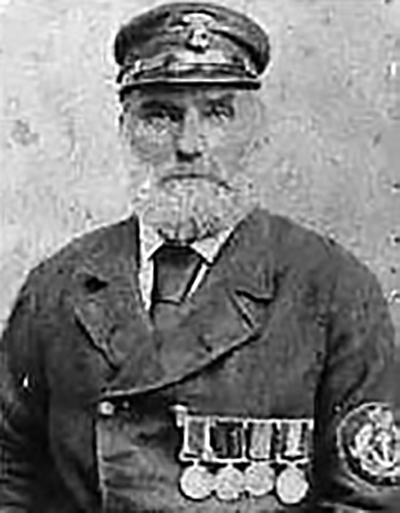

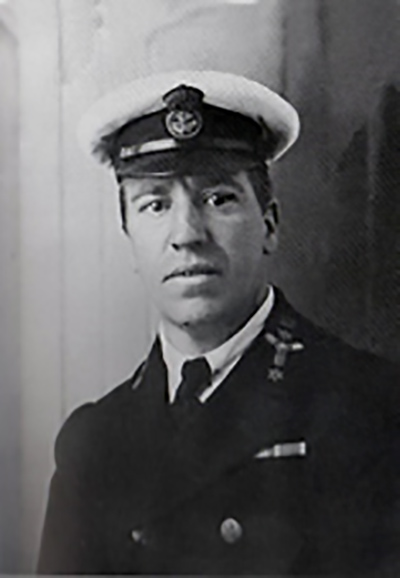
RAN Medical and Dental Rate and Sub-Rate Badges
The history of RN and RAN medical rate and sub-rate badges is summarized at Table 2, and that for dental rates and sub-rates is at Table 3.
The first RN seamen to be given a dedicated job description or ‘rate’, were those who qualified from the gunnery school aboard HMS Excellent in Portsmouth (later moved ashore to Whale Island) in 1830.(33) In 1860, these ‘gunnery’ sailors were given identifying badges on their upper right arm, with other branches receiving their own rate badges over the next 30 years.
RN sick berth attendants have worn a red cross on the right upper arm since 1879, while Australian colonial and RAN medical sailors did so only from then until 1974.(34) RAN dental sailors had their own rate badge from 1922 until 1942, when it was replaced by the SBA badge, with a ‘D’ for dental assistant and ‘DM’ for dental mechanic badge above. On being formed into their own branch in 1948, dental rates reverted to their previous badge the following year.(35)
Both medical and dental rate badges were changed to the present caduceus insignia in 1974. This is despite the fact that a winged staff entwined by two serpents has actually been used for millennia to represent trade, eloquence, negotiation, alchemy and wisdom, rather than medicine. The caduceus was first misapplied by the US Army’s Medical Corps for its badge in 1902, and has been misused throughout much of America since. The correct medical symbol is actually the Rod of Asclepius, which consists of a single serpent entwined around a staff without wings, as for the RAN Health Service crest.(36)
The RAN has a long history of specialist health sailors or ‘sub-rates’, the number and variety of which has waxed and waned according to requirements. At present, the RAN only has underwater medicine or ‘U’ rates, and a small number of ‘O’ or theatre rates.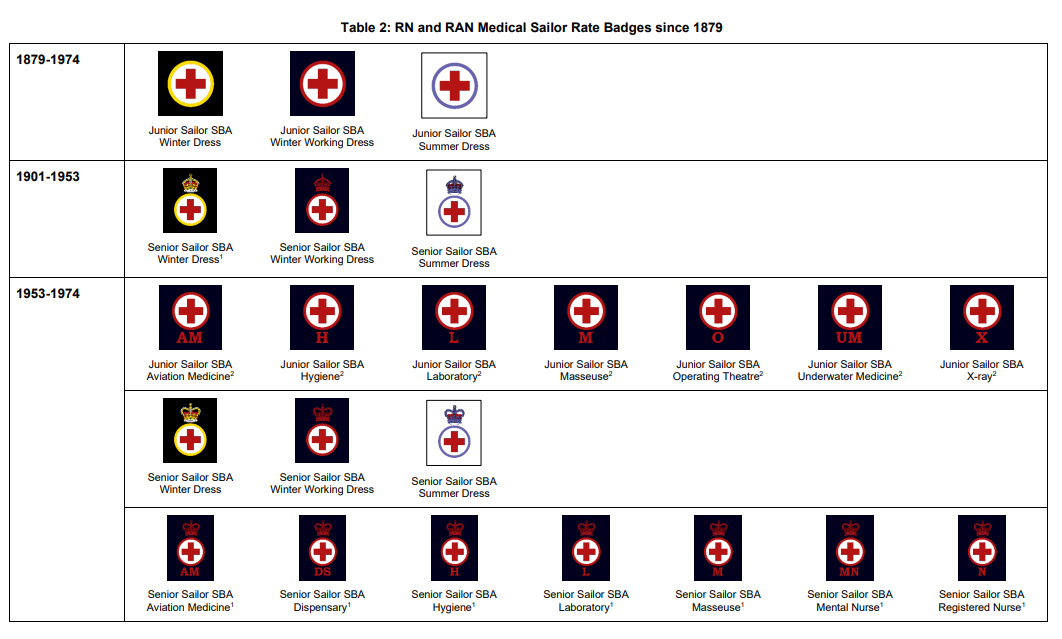
Table 2 continued: RN and RAN Medical Sailor Rate Badges since 1879
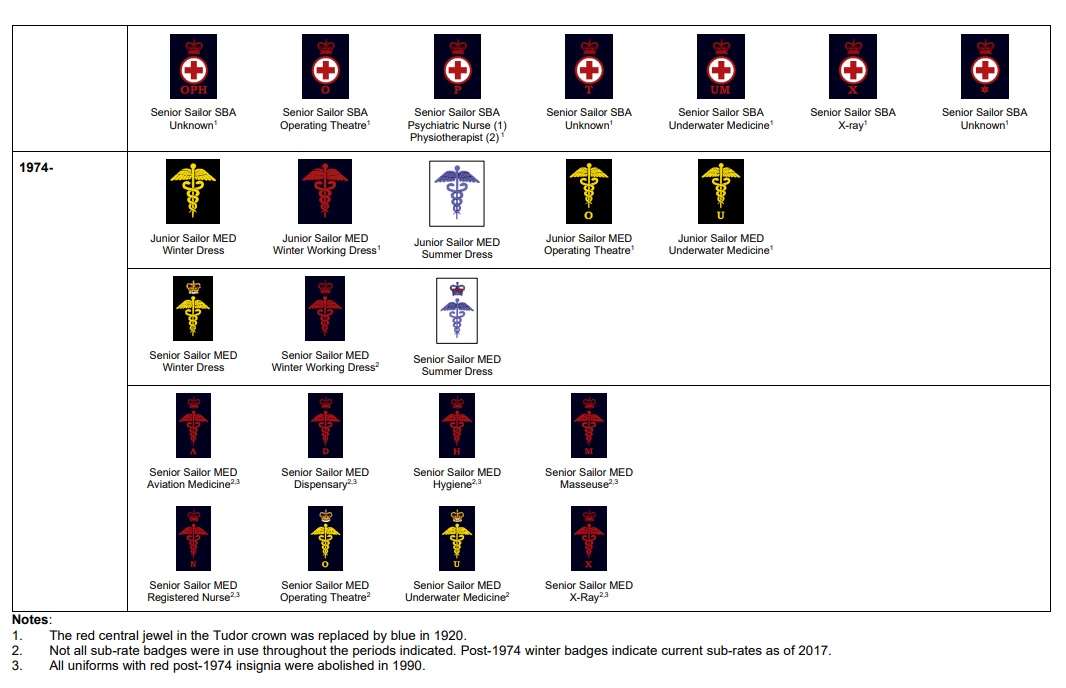

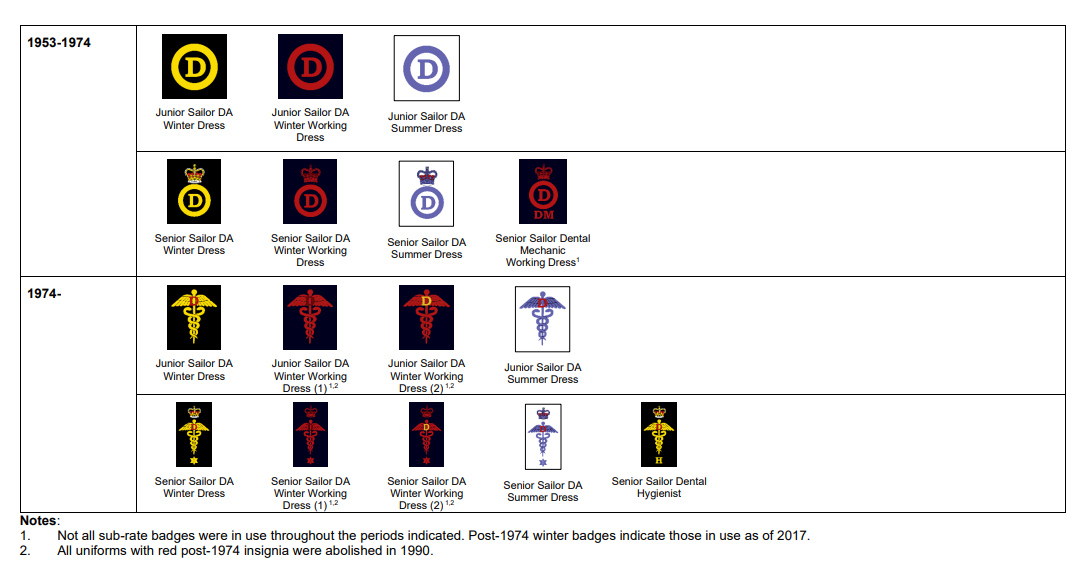
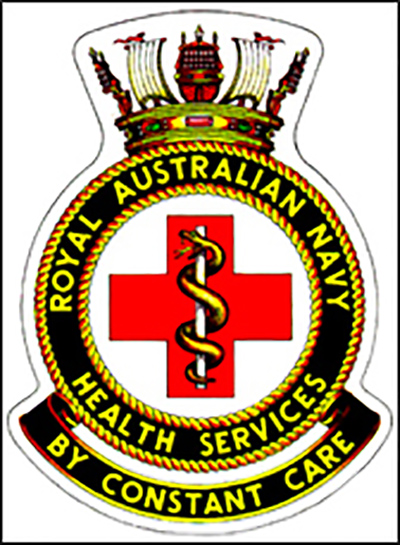
Rank badges for Navy sailors were first introduced in 1827, and assumed more-or-less their current form in 1853. Part Two of this article describes how most of the changes since were mostly limited to the CPO uniform, which only assumed its current form in 1925.
The first RN seamen to be given a specific job description or ‘rate’ were gunnery personnel from 1830, who received the first identifying rate badges in 1860. Dedicated SBAs were introduced in 1833 and they received their rate badge in 1879, while the RAN introduced dental rates with their own badge in 1922. The rate badges for RAN medical and dental sailors assumed their current form in 1974.
It is suggested there is something appealing in the idea that a very young Trafalgar veteran not only could easily have lived long enough to see the first standardised Navy uniforms, but could still identify today’s sailor rank badges… although their rate badges may require some additional explanation!
Author
Dr Neil Westphalen graduated from Adelaide University in 1985 and joined the RAN in 1987. He is a RAN Staff Course graduate and a Fellow of the Royal Australian College of General Practitioners, the Australasian Faculty of Occupational and Environmental Medicine, and the Australasian College of Aerospace Medicine. He also holds a Diploma of Aviation Medicine and a Master of Public Health.
His seagoing service includes HMA Ships Swan, Stalwart, Success, Sydney, Perth and Choules. Deployments include DAMASK VII, RIMPAC 96, TANAGER, RELEX II, GEMSBOK, TALISMAN SABRE 07, RENDERSAFE 14, SEA RAIDER 15, KAKADU 16 and SEA HORIZON 17. His service ashore includes clinical roles at Cerberus, Penguin, Kuttabul, Albatross and Stirling, and staff positions as J07 (Director Health) at the then HQAST, Director Navy Occupational and Environmental Health, Director of Navy Health, Joint Health Command SO1 MEC Advisory and Review Services, and Fleet Medical Officer (2013-2016).
Commander Westphalen transferred to the Active Reserve in July 2016.
Acknowledgements
The author would like to thank Mr John Perryman, CSM (Director Strategic and Historical Studies), Mrs Debra Locke (Deputy Director Navy Uniforms), CMDR Phil Davies (RAN Rtd), and LCDR David John (RANR Rtd), for their assistance with this article.
Disclaimer
The views expressed in this article are the author’s, and do not necessarily reflect those of the RAN, or any of the other organisations mentioned.
1. Westphalen, N, A History of Australian Navy Health Sailor Uniforms and Ranks (Part 1), JMVH Vol 26 No 2 pp 14-24, available from http://jmvh.org/wp-content/uploads/2018/05/Westphalen-Historic.pdf.
2. Westphalen N, A History of Australian Navy Health Sailor Uniforms and Ranks (Part 2), JMVH Jul 2018 Vol 26 No 3 pp 49-56, [available from http://jmvh.org/wp-content/uploads/2018/08/AMMA-JMVH-July- 2018.pdf
3. See Royal Navy Substantive Rates for Seaman, available from http://freepages.genealogy.rootsweb.ancestry.com/~pbtyc/Uniform/Ratings.html
4. Baynham, H, 1971 Before the Mast: Naval Ratings of the 19th Century, Hutchinson: London p 22
5. See Royal Navy Substantive Rates for Seaman, available from http://freepages.genealogy.rootsweb.ancestry.com/~pbtyc/Uniform/Ratings.html
6. 1879 Uniform Regulations, available from http://www.pbenyon.plus.com/Uniform/1879_Uniform_Regs.html
7. 1890 Uniform Regulations, available from http://www.pbenyon.plus.com/Uniform/1890_Uniform_Regs.html
8. 1890 Uniform Regulations, available from http://www.pbenyon.plus.com/Uniform/1890_Uniform_Regs.html
9. Coleman, EC, 2011 Rank and Rate Volume II: Insignia of Royal Naval Ratings WRNS, Royal Marines, QARRNS and Auxiliaries Crowood Press: Ramsbury p 19
10. Australian Naval Order 191/23, available from http://www.navy.gov.au/sites/default/files/documents/Commonwealth_Naval_Orders_1923.pdf
11. Personal communication 26 Dec 17, Mr John Perryman, Director Strategic and Historical Studies, Sea Power Centre – Australia. His research indicates that the practice ceased with the issue of ABR81 in July 1972. The plates in that publication make no reference to petty officers wearing class II rig.
12. 1890 Uniform Regulations, available from http://www.pbenyon.plus.com/Uniform/1890_Uniform_Regs.html
13. Personal communication, CMDR Phil Davies (Rtd), 15 Dec 17. CMDR Davies joined the RAN as a junior sailor in 1958, and changed branch from dental assistant to sick berth attendant in 1960. He had to change from Class III to Class II rig as part of the process. He refers to a three-year transition.
14. See Royal Navy Substantive Rates for Seaman, available from http://freepages.genealogy.rootsweb.ancestry.com/~pbtyc/Uniform/Ratings.html
15. Australian Naval Order 34/19, available from http://www.navy.gov.au/sites/default/files/documents/Commonwealth_Naval_Orders_1919.pdf
16. Commonwealth Naval Order 12/26, available from http://www.navy.gov.au/sites/default/files/documents/Commonwealth_Naval_Orders_1926.pdf
17. See Royal Navy Substantive Rates for Seaman, available from http://freepages.genealogy.rootsweb.ancestry.com/~pbtyc/Uniform/Ratings.html
18. Australian Naval Order 579/65, available from http://www.navy.gov.au/sites/default/files/documents/Commonwealth_Naval_Orders_1965.pdf
19. Australian Naval Order 504/71, available from http://www.navy.gov.au/sites/default/files/documents/Commonwealth_Naval_Orders_1971.pdf
20. Seatalk, 4/1991, p 8.
21. Previous Warrant Officers of the Navy, available from http://www.navy.gov.au/about/senior-leadership-group/previous-warrant-officers-of-the-navy
22. Personal communication 26 Dec 17, Mr John Perryman, Director Strategic and Historical Studies, Sea Power Centre – Australia. It would appear that red badges were phased out in 1990 around the same time that red woven badges for foul weather jackets were discontinued.
23. Seatalk, 3/1997, p 7
24. Soldier Systems, ‘Australian Multicam Camouflage Uniform Officially Launched’, available from
25. Perryman, John. 2011 Kit Muster: uniforms, badges and categories of the Australian Navy, 1865-1953. Sea Power Centre – Australia p 21
26. Australian Navy Order 469/71, available from http://www.navy.gov.au/sites/default/files/documents/Commonwealth_Naval_Orders_1971.pdf
27. Bosun’s mate, available from http://www.portcities.org.uk/london/server/show/ConGallery.57/Ranksin- Nelsons-navy.html
28. 1st Class of Petty Officers. Master at Arms, or Quarter Master (uniform), available from http://collections.rmg.co.uk/collections/objects/128330.html?_ga=1.126153294.255642429.1486145670
29. Perkins, JD. Notes on The Development Of The Torpedo Branch, available from http://www.pbenyon.plus.com/Uniform/Torpedo_branch.html
30. Victorian Naval Forces Muster: Petty Officer James Joseph Ovenden, available from http://www.cerberus.com.au/muster_dadabik/index.php?table_name=crew&function=details&where_field=I D&where_value=947
31. Amended from The Victorian Web: literature history and culture in the Victorian Era, available from http://www.victorianweb.org/history/navy/2.html
32. 1st Class of Petty Officers. Master at Arms, or Quarter Master (uniform), available from http://collections.rmg.co.uk/collections/objects/128330.html?_ga=1.126153294.255642429.1486145670
33. Baynham, H. 1971 Before the Mast: Naval Ratings of the 19th Century, Hutchinson: London p 14
34. The Red Cross emblem first received international approval as a means of identifying non-combatant personnel and equipment, at the First Geneva Convention in 1864. See The History of the Emblems, available from https://www.icrc.org/eng/resources/documents/misc/emblem-history.htm
35. Perryman, John. 2011 Kit Muster: uniforms, badges and categories of the Australian Navy 1865-1953. Sea Power Centre – Australia
36. See Blayney, K, ‘The Caduceus vs the Staff of Asclepius (Asklepian)’, October 2005, available from http://drblayney.com/Asclepius.html
Navy Health Services, available from http://www.navy.gov.au/about/our-people/navy-health-services
37. Navy Health Services, available from http://www.navy.gov.au/about/our-people/navy-health-services




